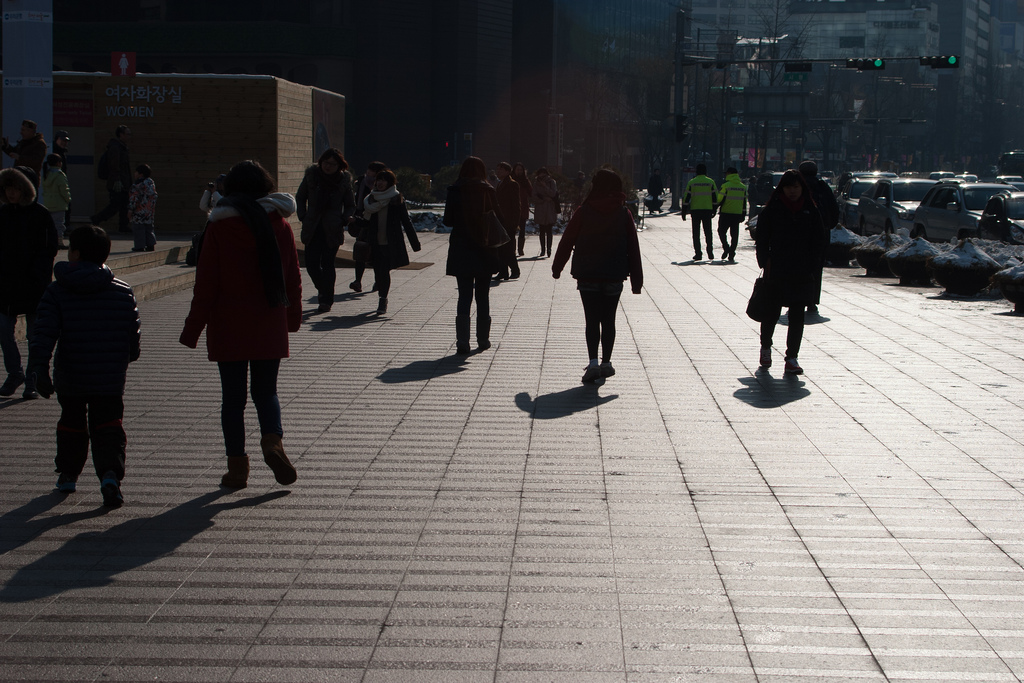The Peninsula
To Three or Not to Three? South Korea Weighs Raising its Social Distancing Threshold

By Kyle Ferrier
With daily new COVID-19 cases rising to over 400 recently, South Korea finds itself on the brink of a second outbreak of the virus. Looming over the possible outbreak is the government’s decision whether to elevate social distancing measures to contain the spread of infections at the expense of, at least in the short-term, an already struggling domestic economy.
In June, the South Korean government adopted a new three tiered social-distancing system in preparation of a new wave of infections. Currently the country is at level two. These rules cap indoor and outdoor gatherings at 50 people and 100 people, respectively; suspend 11 categories of high-risk facilities such as bars, karaoke rooms, and large after-school academies; and require moderate-risk facilities such as movie theaters and religious establishments to strictly adhere to disease prevention rules. Moving to stage three would effectively be instituting a lockdown. Tier three mandates all schools implement classes online or shut down, both high and medium-risk facilities suspend operations, and all but essential workers are required to work from home. Yesterday, the government decided to stay at level two until at least next Sunday, though they have already ordered schools in Seoul to close temporarily and are considering limiting business hours of restaurants and cafes.
Both the government and public are, of course, highly concerned about the implications of a lockdown. Such a move will undeniably be a significant hit to the economy. It would likely pause or even reverse rising consumer demand in South Korea that was crucial in the second quarter GDP numbers not being as bad as other major economies. From May to June, the economy shrank 3.3% from the first three months of the year, the sharpest fall since 1998. This fall was led by a 16.6% drop in exports as global demand plummeted. The one bright spot in the GDP numbers was the 1.4% increase in private consumption, buttressed by government stimulus, though still only possible with the virus under control. Level three social distancing measures would disproportionately impact the sizeable Korean service industry that is built around face to face contact, but the effects would still ultimately be felt throughout the economy. Additionally, because the epicenter of outbreak is now the capital region – home to about half of economic production – as opposed to the smaller city of Daegu this spring, the slowdown could be more serious.
However, just as the government is considering strict measures to contain COVID-19, so too are they considering ways to soften the economic blow. So far, the National Assembly has passed three supplementary budgets amounting to 59 trillion won ($50 billion) to help stimulate the economy. The latest extra budget passed in early July was 35.3 trillion won and was geared towards helping struggling businesses and keeping people employed, with the government estimating nearly 9 million people would benefit. This week the government and the Democratic Party, holding the majority of National Assembly seats, agreed to continue down the path of expansionary fiscal policy to help keep the economy churning even as the pandemic tries to slow it down. The government has ample fiscal space to keep this spending up and, as the current deadlock in the United States Congress proves, having a favorable political environment for the stimulus is just as important. It is not yet clear how this will manifest in the immediate future in the case of a lockdown, but we should expect more spending on the most vulnerable as well as the possibility of another round of stimulus checks.
Further, despite the short-term fears, it is important to remember dealing with COVID-19 is a marathon, not a sprint. Even with significant progress on major vaccine candidates, all signs currently point to us being over a year away from one being available on the market, and even then it will take more time for it to be more widely available in South Korea. A short-lived and effective elevation to phase three could actually do more to help South Korean GDP this year than the prolonged uncertainty of an outbreak or even another major outbreak itself. As difficult as things may get with a lockdown, if it is deemed truly necessary than the long-run gains should be worth much more than the short-term losses.
Kyle Ferrier is a Fellow and Director of Academic Affairs at the Korea Economic Institute of America. The views expressed here are the author’s alone.
Image from 87ab’s photostream on flickr Creative Commons.
